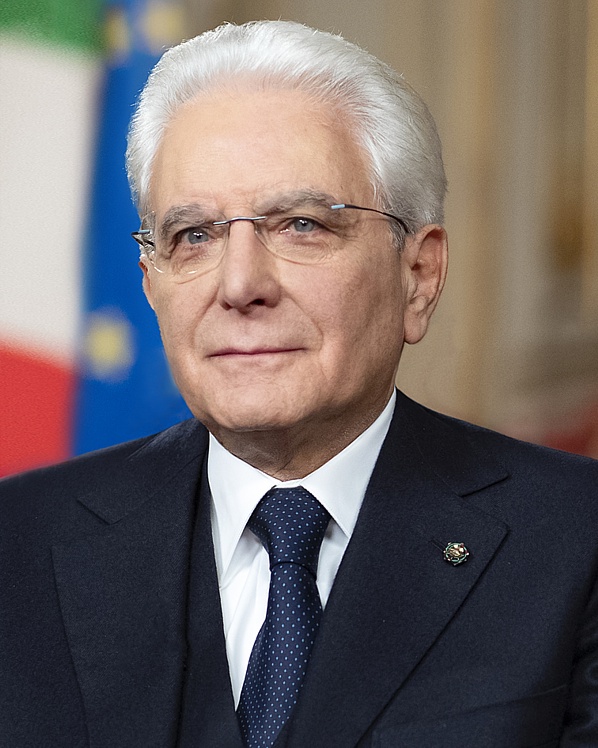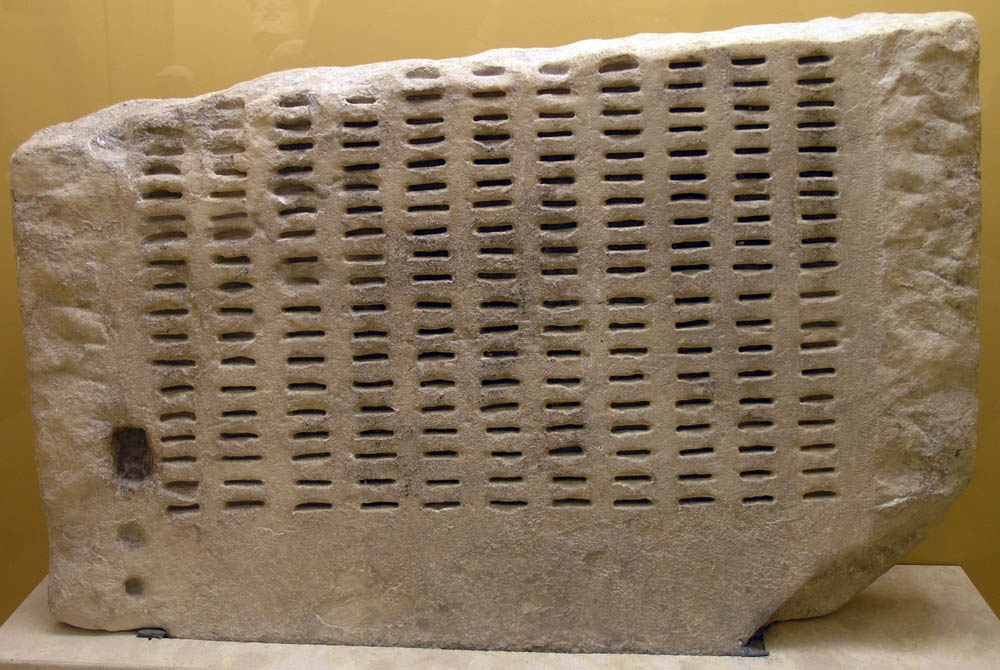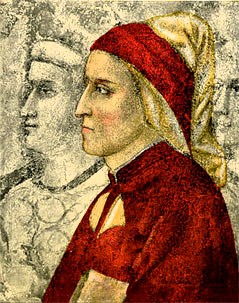|
Signoria Of Florence
The Signoria of Florence (Italian for "lordship") was the government of the medieval and Renaissance Republic of Florence, between 1250 and 1532. Its nine members, the ''Priori'', were chosen from the ranks of the guilds of the city: six of them from the major guilds, and two from the minor guilds. The ninth became the Gonfaloniere of Justice. Selection of members The names of all guild members over thirty years old were put in eight leather bags called ''borse''. Every two months, these bags were taken from the church of Santa Croce, where they were ordinarily kept, and in a short ceremony drawn out at random. Only men who were not in debt, had not served a recent term, and had no relation to the names of men already drawn, would be considered eligible for office. Service in the Signoria Immediately after they were elected, the nine were expected to move into the Palazzo della Signoria, where they would remain for the two months of their office. There they were paid a mode ... [...More Info...] [...Related Items...] OR: [Wikipedia] [Google] [Baidu] |
Italian Language
Italian (, , or , ) is a Romance language of the Indo-European language family. It evolved from the colloquial Latin of the Roman Empire. Italian is the least divergent language from Latin, together with Sardinian language, Sardinian. It is spoken by about 68 million people, including 64 million native speakers as of 2024. Italian is an official language in Languages of Italy, Italy, Languages of San Marino, San Marino, Languages of Switzerland, Switzerland (Ticino and the Grisons), and Languages of Vatican City, Vatican City; it has official Minority language, minority status in Minority languages of Croatia, Croatia, Slovene Istria, Romania, Bosnia and Herzegovina, and the municipalities of Santa Teresa, Espírito Santo, Santa Tereza, Encantado, Rio Grande do Sul, Encantado, and Venda Nova do Imigrante in Languages of Brazil#Language co-officialization, Brazil. Italian is also spoken by large Italian diaspora, immigrant and expatriate communities in the Americas and Austral ... [...More Info...] [...Related Items...] OR: [Wikipedia] [Google] [Baidu] |
History Of Italy
Italy has been inhabited by humans Prehistoric Italy, since the Paleolithic. During antiquity, there were many ancient peoples of Italy, peoples in the Italian peninsula, including Etruscan civilization, Etruscans, Latins, Samnites, Umbri, Cisalpine Gauls, Greeks in ''Magna Graecia'' and others. Most significantly, Italy was the cradle of the ancient Rome, Roman civilization. Rome was founded as a kingdom in 753 BC and became a republic in 509 BC. The Roman Republic then Roman unification of Italy, unified Italy forming a confederation of the Italic peoples and rise of Rome, rose to dominate Western Europe, Northern Africa, and the Near East. After the assassination of Julius Caesar, the Roman Empire dominated Western Europe and the Mediterranean for centuries, contributing to the development of Western culture, philosophy, science and art. During the early Middle Ages, Italy experienced the succession in power of Ostrogoths, Population of the Byzantine Empire, Byzantines, Longob ... [...More Info...] [...Related Items...] OR: [Wikipedia] [Google] [Baidu] |
Political History Of Italy
The politics of Italy are conducted through a parliamentary republic with a multi-party system. Italy has been a democratic republic since 2 June 1946, when the monarchy was abolished by popular referendum and a constituent assembly, formed by the representatives of all the anti-fascist forces that contributed to the defeat of Nazi and Fascist forces during the liberation of Italy, was elected to draft a constitution, which was promulgated on 1 January 1948. Executive power is exercised by the Council of Ministers, which is led by the Prime Minister, officially referred to as "President of the Council" (''Presidente del Consiglio''). Legislative power is vested primarily in the two houses of Parliament and secondarily in the Council of Ministers, which can introduce bills and holds the majority in both houses. The judiciary is independent of the executive and the legislative branches. It is headed by the High Council of the Judiciary, a body presided over by the President, w ... [...More Info...] [...Related Items...] OR: [Wikipedia] [Google] [Baidu] |
Medieval Politics
In the history of Europe, the Middle Ages or medieval period lasted approximately from the 5th to the late 15th centuries, similarly to the post-classical period of global history. It began with the fall of the Western Roman Empire and transitioned into the Renaissance and the Age of Discovery. The Middle Ages is the middle period of the three traditional divisions of Western history: classical antiquity, the medieval period, and the modern period. The medieval period is itself subdivided into the Early, High, and Late Middle Ages. Population decline, counterurbanisation, the collapse of centralised authority, invasions, and mass migrations of tribes, which had begun in late antiquity, continued into the Early Middle Ages. The large-scale movements of the Migration Period, including various Germanic peoples, formed new kingdoms in what remained of the Western Roman Empire. In the 7th century, North Africa and the Middle East—once part of the Byzantine Empire—came und ... [...More Info...] [...Related Items...] OR: [Wikipedia] [Google] [Baidu] |
Government Of Italy
The government of Italy is that of a democratic republic, established by the Italian constitution in 1948. It consists of Legislature, legislative, Executive (government), executive, and Judiciary, judicial subdivisions, as well as of a head of state, known as the President of Italy, president. The Constitution of Italy, Constitution of the Italian Republic is the result of the work of the Constituent Assembly of Italy, Constituent Assembly, which was formed by the representatives of all the Anti-fascism, anti-fascist forces that contributed to the defeat of Nazism, nazis and the fascist forces during the Italian Civil War. Article 1 of the Italian constitution states: By stating that Italy is a democratic republic, the article solemnly declares the results of the 1946 Italian institutional referendum, institutional referendum which took place on 2 June 1946 valid. The Italy, state is not the hereditary property of the King of Italy, ruling monarch, but instead a ''res publica' ... [...More Info...] [...Related Items...] OR: [Wikipedia] [Google] [Baidu] |
Sortition
In governance, sortition is the selection of public officer, officials or jurors at random, i.e. by Lottery (probability), lottery, in order to obtain a representative sample. In ancient Athenian democracy, sortition was the traditional and primary method for appointing political officials, and its use was regarded as a principal characteristic of democracy. Sortition is often classified as a method for both direct democracy and deliberative democracy. Today sortition is commonly used to select prospective jurors in common law (legal system), common-law systems. What has changed in recent years is the increased number of citizens' assembly, citizen groups with political advisory power, along with calls for making sortition more consequential than elections, as it was in Athenian democracy, Athens, Republic of Venice, Venice, and Republic of Florence, Florence. History Ancient Athens Athenian democracy developed in the 6th century BC out of what was then called isonomia (equal ... [...More Info...] [...Related Items...] OR: [Wikipedia] [Google] [Baidu] |
Maritime Republics
The maritime republics (), also called merchant republics (), were Italian Thalassocracy , thalassocratic Port city, port cities which, starting from the Middle Ages, enjoyed political autonomy and economic prosperity brought about by their maritime activities. The term, coined during the 19th century, generally refers to four Italian cities, whose coats of arms have been shown since 1947 on the flags of the Italian Navy and the Italian Merchant Navy: Duchy of Amalfi, Amalfi, Republic of Genoa , Genoa, Republic of Pisa, Pisa, and Republic of Venice, Venice. In addition to the four best known cities, Republic of Ancona, Ancona,Peris Persi, in ''Conoscere l'Italia'', vol. Marche, Istituto Geografico De Agostini, Novara 1982 (p. 74); AA.VV. ''Meravigliosa Italia, Enciclopedia delle regioni'', edited by Valerio Lugoni, Aristea, Milano; Guido Piovene, in ''Tuttitalia'', Casa Editrice Sansoni, Firenze & Istituto Geografico De Agostini, Novara (p. 31); Pietro Zampetti, in ''Itinerari de ... [...More Info...] [...Related Items...] OR: [Wikipedia] [Google] [Baidu] |
Italian City-states
The Italian city-states were numerous political and independent territorial entities that existed in the Italian Peninsula from antiquity to the formation of the Kingdom of Italy in the late 19th century. The ancient Italian city-states were Etruscan ( Dodecapolis), Latin, most famously Rome, and Greek (Magna Graecia), but also of Umbrian, Celtic and other origins. After the fall of the Western Roman Empire, urban settlements in Italy generally enjoyed a greater continuity than settlements in western Europe. Many of these cities were survivors of earlier Etruscan, Umbrian and Roman towns which had existed within the Roman Empire. The republican institutions of Rome had also survived. Some feudal lords existed with a servile labour force and huge tracts of land, but by the 11th century, many cities, including Venice, Milan, Florence, Genoa, Pisa, Lucca, Cremona, Siena, Città di Castello, Perugia, and many others, had become large trading metropoles, able to obtain indepen ... [...More Info...] [...Related Items...] OR: [Wikipedia] [Google] [Baidu] |
Italian Renaissance
The Italian Renaissance ( ) was a period in History of Italy, Italian history between the 14th and 16th centuries. The period is known for the initial development of the broader Renaissance culture that spread across Western Europe and marked the transition from the Middle Ages to modernity. Proponents of a "long Renaissance" argue that it started around the year 1300 and lasted until about 1600. In some fields, a Italian Renaissance painting#Proto-Renaissance painting, Proto-Renaissance, beginning around 1250, is typically accepted. The French word (corresponding to in Italian) means 'rebirth', and defines the period as one of cultural revival and renewed interest in classical antiquity after the centuries during what Renaissance humanism, Renaissance humanists labelled as the Dark Ages (historiography), "Dark Ages". The Italian Renaissance historian Giorgio Vasari used the term ('rebirth') in his ''Lives of the Most Excellent Painters, Sculptors, and Architects'' in 1550, bu ... [...More Info...] [...Related Items...] OR: [Wikipedia] [Google] [Baidu] |
Italy In The Middle Ages
The history of Italy in the Middle Ages can be roughly defined as the time between the collapse of the Western Roman Empire and the Italian Renaissance. Late antiquity in Italy lingered on into the 7th century under the Ostrogothic Kingdom and the Byzantine Empire under the Justinian dynasty, the Byzantine Papacy until the mid 8th century. The "Middle Ages" proper begin as the Byzantine Empire was weakening under the pressure of the Muslim conquests, and most of the Exarchate of Ravenna finally fell under Lombard rule in 751. From this period, former states that were part of the Exarchate and were not conquered by the Lombard Kingdom, such as the Duchy of Naples, became de facto independent states, having less and less interference from the Eastern Roman Empire. Lombard rule ended with the invasion of Charlemagne in 773, who established the Kingdom of Italy and the Papal States in large parts of Northern and Central Italy. This set the precedent for the main political ... [...More Info...] [...Related Items...] OR: [Wikipedia] [Google] [Baidu] |
History Of Florence
Florence () weathered the decline of the Western Roman Empire to emerge as a financial hub of Europe, home to several banks including that of the politically powerful Medici family. The city's wealth supported the development of art during the Italian Renaissance, and tourism attracted by its rich history continues today. Prehistoric origins For much of the Quaternary Age, the Florence-Prato-Pistoia plain was occupied by a great lake bounded by Monte Cavo, Monte Albano in the west, Montegiovi, Monte Giovi in the north and the foothills of Chianti in the south. Even after most of the water had receded, the plain, above sea level, was strewn with ponds and marshes that remained until the 18th century, when the land was reclaimed. Most of the marshland was in the region of Campi Bisenzio, Signa and Bagno a Ripoli. It is thought that there was already a settlement at the confluence of the Mugnone River with the River Arno between the 10th and 8th centuries Anno Domini, BC. Between ... [...More Info...] [...Related Items...] OR: [Wikipedia] [Google] [Baidu] |
Government
A government is the system or group of people governing an organized community, generally a State (polity), state. In the case of its broad associative definition, government normally consists of legislature, executive (government), executive, and judiciary. Government is a means by which organizational policies are enforced, as well as a mechanism for determining policy. In many countries, the government has a kind of constitution, a statement of its governing principles and philosophy. While all types of organizations have governance, the term ''government'' is often used more specifically to refer to the approximately 200 list of sovereign states, independent national governments and government agency, subsidiary organizations. The main types of modern political systems recognized are democracy, democracies, totalitarian regimes, and, sitting between these two, authoritarianism, authoritarian regimes with a variety of hybrid regimes. Modern classification systems also ... [...More Info...] [...Related Items...] OR: [Wikipedia] [Google] [Baidu] |








